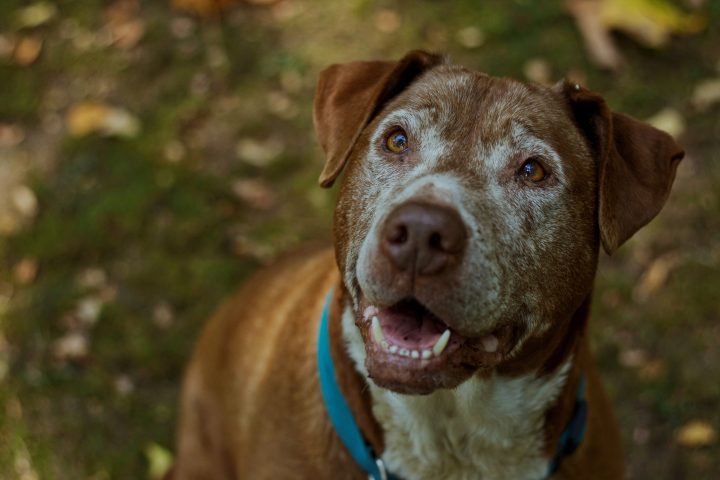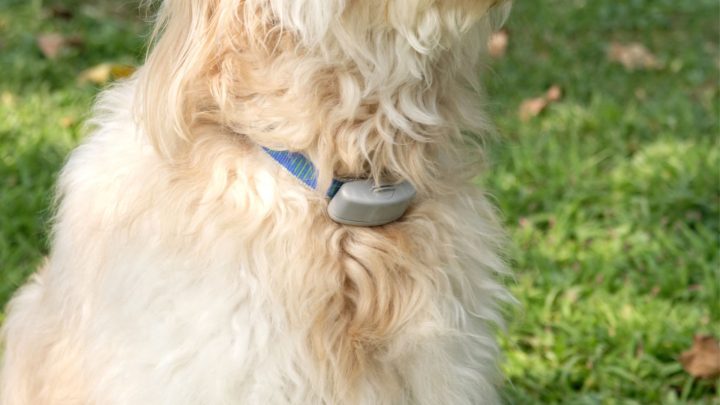Are you looking to discipline your furry pal? Has it been naughty? Are you, instead, trying to teach your dog to do professional tricks? When is a dog old enough for a shock collar, and how should you go about it? All this and more today as we explore the moral ins and outs of using a shock collar on dogs.

Table of Contents
- When and Where to Begin with Shock Collars
- When is a Dog Old Enough for the Shock Collar?
- Conditioning Your Dog With a Collar
- Getting the Size Right
- Some Helpful Tips for Training Your Dog Without a Shock Collar
- Final Bark
- FAQs
When and Where to Begin with Shock Collars
If you are working with a particularly naughty doggy and you have decided completely that using a shock collar is what you want to do to discipline it, then you should start immediately. This means that you should begin a course of discipline training as soon as they are brought home for the first time.
Yes, it might sound a little harsh, but you can always start off lightly, using cage training and the like to bring the dog out of its shell a little more. If, though, this doesn’t work, you always have the shock collar to hand if you deem it absolutely necessary.
Above everything, seek to make every interaction with your dog a learning opportunity as they will be absorbing plenty of the information and vibrations that you give out.
When is a Dog Old Enough for the Shock Collar?
Before you start using a shock collar on any old dog, you might wish to check the age limits of such a piece of technology.
Frustratingly, there are no universal age criteria to follow. That said, some experts have suggested that you wait at least 6 months before introducing a shock collar. By this point, any latent violent tendencies will have begun to manifest, and thus the shock collar will be deemed most necessary. This is about when to start training a puppy anyhow.
More often, though, you should use your own judgment to ascertain whether the dog in question is mature and obedient enough to do away with the use of a shock collar altogether.

Conditioning Your Dog With a Collar
The two main principles for using a shock collar to discipline involve 1) showing your dog what you want it to do and then 2) reinforcing this command by using the collar.
These central tenets of collar-conditioning are to be followed at all costs. It is essentially animal abuse if you choose to just shock your dog for the hell of it. At least give a reason for the shock first, demonstrating what it is that you want the dog to abide by.
The lack of a clear motive will not only scare the dog, but it will also confuse it more, muddying the waters and nullifying your initial hopes of discipline.
A Step-by-Step Guide
Here’s how to do it properly:
- Show the dog what it is supposed to do, perhaps starting off with a kennel command, pushing the dog inside the kennel, and repeating the command, placing the collar on the dog but ensuring that it is turned off.
- Once the dog exhibits some sign of understanding, then you can turn the collar on, ensuring that you do, however, keep it on the lowest setting, starting with 1 or 2.
- Turn the stimulation on and give the command, turning off the stimulation again if the dog complies. If there is no complicity, push the dog into the kennel while the stimulation is still on, turning it off as soon as they are in the kennel.
- Once the dog grasps the command with stimulation from the shock collar, you can move on to the next stage, preferably after 1 or 2 weeks have passed and solidified the learning in the dog’s mind. Continue giving the command first and following it with stimulation, turning the stimulation off as soon as the dog complies, and repeating this for several days.
- Next, you will engage in a separate stage of the process where you give the command and apply stimulation only if the dog does not obey your instruction.
- Finally, you can go about generalizing the command. The dog might, after all, have grown accustomed to the particular location of the kennel. Move the kennel around the garden or in different places around the yard to test how the dog reacts, adjusting your course accordingly.
Getting the Size Right
Needless to say, no dog is quite the same size, so you would be best advised to check the size of your dog’s neck before buying a shock collar to avoid disappointment when you get home from the pet store. Instead of checking the measurements below, you could, alternatively, use the PetSpy P620 which is easily adjustable for just about any normal size of dog.
| Size | Neck Size | Cone Length |
| Extra Small | 8″ – 10″ | 4″ |
| Small | 12″ – 14″ | 6″ |
| Medium | 13″ – 15″ | 8″ |
| Large | 15″ – 17″ | 10″ |

Some Helpful Tips for Training Your Dog Without a Shock Collar
Follow these if you are not quite sold on the shock collar but still want a way to discipline your doggy.
Repetition
Being creatures of habit, dogs and other animals (including humans) will learn easiest and best by repetition. In this way, it will take several repetitions of an action to fully implant something in the mind of a dog and make it automatic to them.
Likewise, a dog will likely also need some refresher sessions, lest the action becomes lost throughout the dog’s life – remember, a dog ages about 7 times as fast as a human.
Sessions
Just as the mind of, say, a student can wander if a class is too long, the same goes for a dog in a training session. By limiting the length of a training session, you are ensuring that your lessons are short and enjoyable and that your dog’s attention is going to be maintained for the entire duration.
A good mantra to follow is that quality is far more important than quantity and this is something incredibly true for dog training. For this reason, try to end each session on a positive note that the dog will remember fondly (treats help)!
Attitude
In a similar way, it is best to have realistic expectations for your dog’s progress and what they can achieve. If you go into each session with an attitude that attempts to make your dog do a whole bunch of things that it can’t realistically achieve, then you are going to leave each session thoroughly disappointed and probably take your frustrations out on the dog.
Real progress will take time and will scarcely ever be as immediate as you might like. If the dog is having difficulty, try honing in on the thing they are finding most difficult and come back to it another day.
Praiseworthy
Far more than admonishing a dog, praise will do an exceedingly better job at teaching a dog which of their actions you most encourage. By praising a dog after it has successfully completed an exercise, you are reinforcing in its understanding that you approve of its actions.
Delivering praise properly is also vital – try to always look directly into the dog’s eyes to reinforce the connection between the two of you, delivering the praise either verbally or by physical contact.
Hands
The mantra of quality over quantity also presents itself in the form of communication between yourself and the dog. To encourage greater understanding and connection between yourself and the dog, try using hand signals alongside your vocal cues.
Doing so will help to ensure that, even if the dog does not quite hear what you are communicating, it will at least see your hand signals and make the association with what you are attempting to request of it.
A dog’s hearing is good but it’s not perfect! At long distances, you might need to rely on hand signals to get the job done.
Voice
Sure, dogs can be pretty darn intelligent, but their understanding of human language is mostly ascertained through the sound of the words instead of the actual linguistic material.
For this reason, you should look to use the same or a similar tone of voice when you are instructing your dog to do a certain thing. Try using as separate a tone of voice for each different instruction as possible to better help the dog see these actions as separate.
Final Bark
So, there you have it!
Hopefully, you can now ascertain whether it would be right for you to use a shock collar on your own dog and that you now know how to properly go about training your dog, regardless of whether you use a shock collar or not.
FAQs
Indeed you can, though you should always try to prioritize the comfort of the dog. So, if they are visibly uncomfortable because of the training collar sticking to their skin, then you should not force them to keep wearing it. At the end of the day, you should use your own discretion and personal preferences to choose what seems most right for you and your dog.
If you must use a shock collar, it is recommended to start at at least 6 months old.





